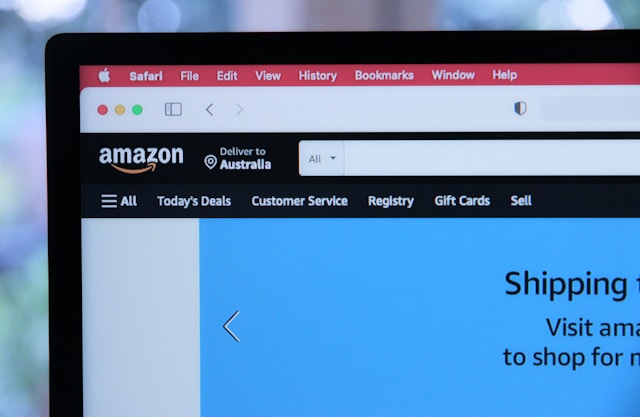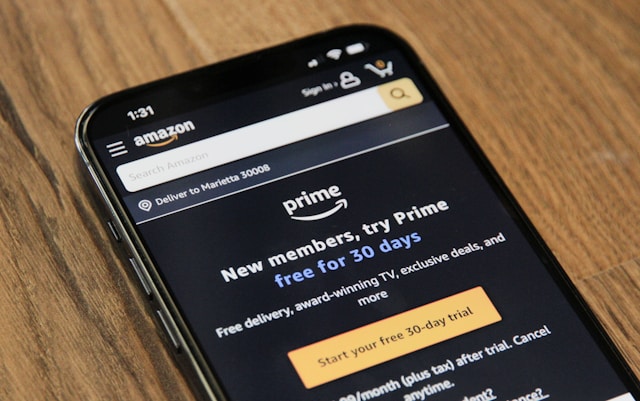行動科学を活用してコンバージョン率を向上
現代の競争の激しいEコマース環境において、顧客の行動を理解することが成功の鍵となる。データに基づいたアプローチにより、行動分析と最適化技術を組み合わせて、ユーザー体験を向上させ、コンバージョン率を高めることができる。ただし、倫理的かつ責任を持って適用することが重要になる。
カスタマージャーニーマップ
消費者がサイトをどのように移動するかを理解することは、体験を最適化する上で極めて重要だ。
重要なタッチポイントの特定: 顧客が意思決定を行う重要な瞬間を発見
ペインポイントの発見: ユーザーが困ったり、離脱してしまう箇所を見つけ出す。
インパクトの最大化: データに基づいた改善を行い、ユーザー体験を大幅に向上させ、コンバージョンを促進。
行動トリガー
購入行動に影響を与える主な心理的要因
限定オファーや在庫僅少を強調し、緊急性を創出。これにより、より迅速な意思決定を促し、成約率を向上させる。
例:
- Amazonの「残り3点のみ – お早めにご注文ください」というメッセージ
- Booking.comの「この価格で残っているのは1部屋のみです」というアラート
顧客レビュー、評価、証言を示し、信頼性と信憑性を構築。人気商品や顧客のお気に入りを強調し、購入を促進。
例:
- Yelpのビジネス評価とレビュー
- Netflixの「Netflixで人気」や「トレンド」セクション
カウントダウンタイマーや期間限定プロモーションを使用し、即時行動を促す。期間限定割引やフラッシュセールで迅速な成約を促進。
例:
- Amazonの「本日のお買い得品」
- 航空会社の直前割引
真の期間限定オファーや実際の在庫僅少を強調し、緊急性を創出することが重要だ。商品がないのに在庫が限られていると思い込ませることでユーザーの信頼を損ない、長期的な顧客関係を悪化させる可能性がある。
例: Amazon.com
Amazon は、デジタル小売業界における行動科学の原則の代表的な活用例。
- パーソナライズされたレコメンド
- ワンクリック注文
- Prime 会員制度
- 期間限定セール
- 「よく一緒に購入される商品」のおすすめ
- 送料無料のための進捗バー
- 顧客レビューと評価
- 「後で買う」機能
- ダイナミックプライシング
- モバイルアプリ最適化

上の活用例に対して、アマゾンは以下の行動科学の原則を巧みに応用している。
パーソナライズされたレコメンデーション
利用可能性ヒューリスティック: Amazonは、顧客の記憶から関連商品を想起させやすくすることで、購買意欲を刺激している。
社会的証明: 「この商品を購入した人はこんな商品も購入しています…」という表示は、他者の購買行動が顧客の意思決定に影響を与える仕組みを取り入れている。
ワンクリック注文
購入プロセスを簡素化し、顧客体験を向上させる機能。
コンバージョン率向上: 購入手続きの簡便化により、コンバージョン率の向上に貢献する。
売上増加: 衝動買いを促し、売上増加に繋がる可能性がある。
Prime会員
Amazonの会員サービスで、無料配送や限定特典などの利点を提供。
サンクコスト効果: 一度Primeの料金を支払うと、顧客は「元を取るため」にAmazonをより多く利用する傾向が強くなる。
損失回避: Prime特典を失うことへの恐れが、サブスクリプションの継続や頻繁な利用を促進する。

期間限定セール
顧客の購買意欲を刺激し、売上を向上させるためのマーケティング手法。
希少性マーケティング: 商品の希少性を強調することで、購買意欲を高め、衝動買いを促す。
FOMO(機会損失の恐怖)マーケティング: 時間制限によって、顧客に焦燥感を抱かせ、購買行動を促す。
「一緒に購入されている商品」
Amazonは、顧客の購買履歴に基づいて、関連性の高い商品を提案する機能を提供している。
バンドリング効果: 複数の商品を組み合わせることで、単体で購入するよりも高い価値を感じさせ、購買意欲を刺激する。
アンカリング効果: メイン商品の価格を基準とし、それに比べて追加の商品が相対的に小さな出費に感じられるようになる。
送料無料までの進捗バー
Amazonは、顧客が送料無料になるまであとどれくらいの金額が必要かを表示している。
ゴール勾配効果: 人々は目標(送料無料)に近づくほど、それを達成する動機が高まる。
進捗効果: 目標達成への進捗状況を表示することで、目標達成へのコミットメントを高める。
ユーザーによるレビュー・評価機能
Amazonでは、製品に対する顧客レビューや評価を目立つ位置に表示している。
社会的証明: 他の顧客からのポジティブなレビューを目にすることで、信頼感が高まり、購入の可能性も上がる。
迅速な意思決定: 星評価は、顧客が短時間で商品の品質を判断するための有効な手段となる。
「あとで買う」ボタン
購入を検討している商品を後で買うために保存できる機能。
所有効果: 商品を保存することで、あたかも自分のものになったような感覚になり、購入意欲が高まる。
選択先送り: 即座に購入する準備ができていない顧客に選択肢を提供し、サイトから離れることなく関与を維持させる。
ダイナミックプライシング
Amazonは需要、競合、その他の要因に基づいて価格を調整するアルゴリズムを使用している。
価格認知: 小さな価格変動は、わずかな値下げでもお得感を生み出す効果がある。
アンカリング: 以前の高い価格が基準点として機能し、現在の価格をより魅力的に感じさせる。
アプリの最適化
Amazonのモバイルアプリは、スマートフォン上でシームレスなショッピング体験を提供する。
習慣形成: モバイルショッピングの利便性により、習慣的な閲覧や購買行動が生まれる。
アクセス性: 常にモバイルデバイスでAmazonにアクセスできることで、新たな購買機会を創出する。
倫理的配慮
行動科学を活用することで、Eコマースのパフォーマンスを大幅に向上させることができるが、倫理的な影響と操作の間の微妙なバランスを踏まえることが重要である。
マーケターは、透明性、消費者の自律性、インフォームドコンセントを戦略の中心におくべきである。倫理的なマーケティングは、信頼を構築するだけでなく、長期的な顧客関係を維持する。
個人情報保護とパーソナライズ
パーソナライゼーションは、顧客体験を向上させる有効な手段であるが、個人情報保護とのバランスを取る必要がある。
- 法規制遵守: 関連する法規制を遵守し、個人情報の取扱いを適切に行う。
- 同意取得: 個人情報の利用目的を明確にし、顧客の同意を得る。
- データ最小化原則: 目的に必要な範囲で最小限の個人情報を収集する。
- 情報開示: 個人情報の取扱に関する情報を顧客に開示する。
- 自己決定権: 顧客が自身の個人情報に関する決定を下せるよう、適切な手段を提供する。
文化的な考慮
行動科学の原則は、文化によってその有効性が異なる可能性がある。
- 個人主義 vs. 集団主義: 社会的証明の戦術は、集団主義文化でより効果的である可能性がある。
- 不確実性回避: 不確実性回避の高い文化は、保証や詳細な製品情報により反応する可能性がある。
- 時間指向: 即時的な利益と長期的な利益の魅力は、文化的な時間指向に基づいて異なる可能性がある。
